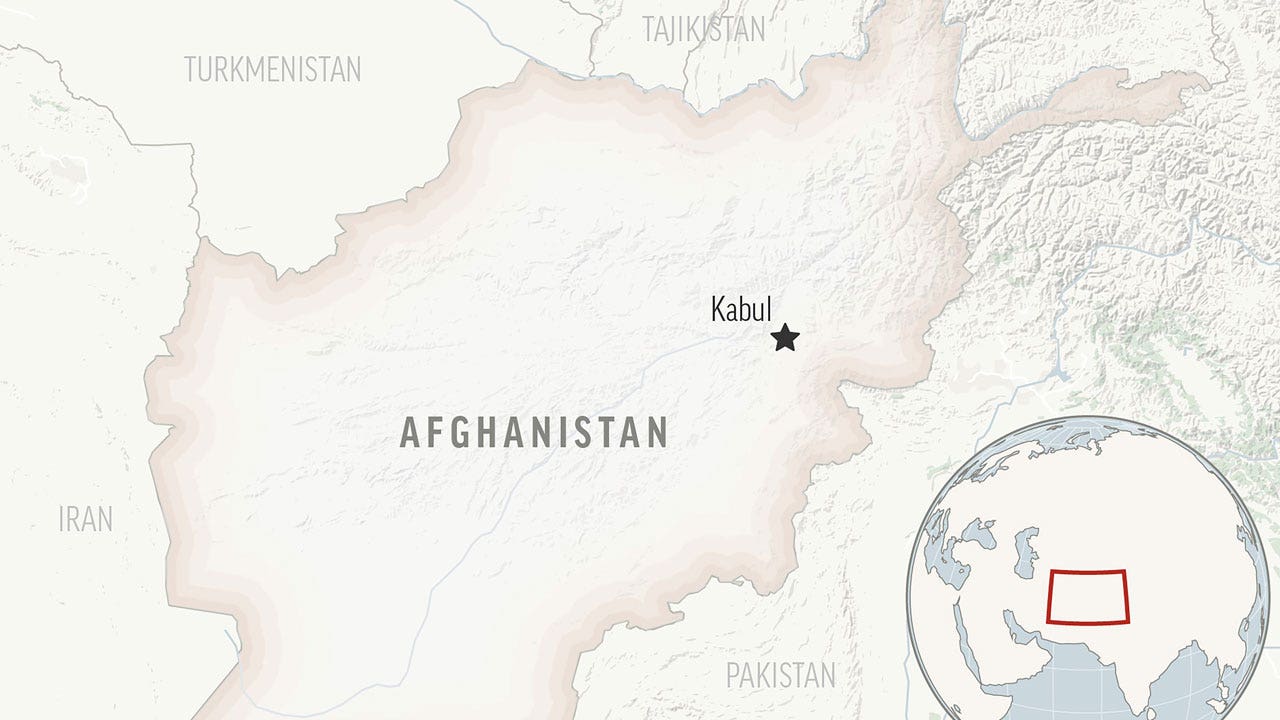The crew at an artillery position in eastern Ukraine had 33 shells in its ammunition bunker, stacked neatly like firewood against a wall.
Then came an order to fire. Twenty minutes later, smoke wafted around a howitzer and 17 shells were gone — more than half the crew’s ammunition. The rapidly depleted stack was emblematic of Ukraine’s dwindling supply of artillery munitions, even as Russian attacks persist.
“Artillery decides battles,” said Capt. Vladyslav Slominsky, the artillery commander along this section of the front. “Who has more wins.”
For now, that is Russia, as Ukrainian soldiers are reaching for some of the last ammunition for some types of weapons after months of delays in the U.S. Congress over a fresh round of military and financial assistance. There are signs that the logjam may be breaking, as Speaker Mike Johnson this week laid out potential conditions for bringing the measure up for a vote that it is expected to pass despite opposition from many conservative Republicans.
The shortfall comes as Ukraine is on the defensive along the 600-mile front line in eastern Ukraine and is building additional fortifications, such as bunkers, trenches and minefields. Artillery ammunition is needed to hold the line until the defensive fortifications are completed and an expected Russian offensive gets underway this summer.
Russia has had an artillery advantage throughout the war, but that edge diminished for a time last year. Estimates vary, but analysts and Ukrainian officials say Russia is now firing at least five times as many artillery rounds as Ukraine.
“You cannot expect people to fight without ammunition,” Johan Norberg, a military analyst at the Swedish Defense Research Agency, said in a telephone interview. “That’s a basic point.”
Ukraine’s largest single supplier of ammunition was the United States until the latest round of military assistance stalled in Congress. Representative Mike Turner of Ohio, a Republican who is the chairman of the House Intelligence Committee, told CBS News over the weekend that American military and intelligence officials had made it clear Ukraine could not hold out much longer.
“We are at a critical juncture on the ground that is beginning to be able to impact not only the morale of the Ukrainians that are fighting but also their ability to fight,” Mr. Turner said.
On the front lines in Ukraine, they call it the “shell hunger,” a desperate shortage of munitions that is warping tactics and the types of weapons employed. It is not just the overall lack of ammunition that is so damaging but also an imbalance in the kinds on hand.
A year ago, for example, Ukraine lobbied the United States to supply cluster munitions, often criticized for scattering unexploded bomblets that pose a threat to civilians. As a result, it now has a relative abundance of cluster munitions that are effective against infantry but few of the high-explosive shells that could be more effective against advancing Russian tanks and other armored vehicles, military analysts and Ukrainian soldiers have said.
A shortage of mortar shells that cost about $1,000 each has forced commanders to turn to heavier artillery shells that are in short supply and, at $3,000, far more expensive. And Ukraine has more NATO-caliber shells than Soviet-caliber ones, even as it still fields more Soviet-legacy guns than newly provided Western models. And the heavy reliance on the Western howitzers has sent many back to the repair shop when they are badly needed on the front.
The Russian military, for its part, has developed relatively effective tactics for storming trench lines in the absence of heavy artillery from the Ukrainian side, pushing forward using large artillery bombardments of its own, human wave attacks with convicts and aviation bombs that can be released while planes are out of range of Ukrainian air defenses.
Ahead of the expected offensive, Russia has replenished its ranks with recruits and conscripts without resorting to a mass mobilization that might prove destabilizing, as was the case in the fall of 2022. And President Vladimir V. Putin has cast a stage-managed presidential vote as a popular endorsement of the war, while suggesting without evidence that Ukraine played a role in a terrorist attack on a concert hall in Moscow, stirring anger at Ukrainians.
By last week, Russian forces had advanced toward a key line of trenches and bunkers to the west of the town of Avdiivka, which Russia captured in February. Over the weekend, Russian forces staged one of their largest ground assaults in months on Ukrainian positions in that area, according to the Institute for the Study of War, a Washington group that closely tracks developments in the conflict.
Forced to cope with what they have, Ukrainian gun crews have to be fast and judicious in their expenditure of shells. When Russian soldiers break cover to attack, Ukrainian gunners have little time to lose.
One recent morning, around 5 a.m., a call came to a crew firing cluster munitions. Soldiers threw on body armor and helmets, raced to their howitzer and set about firing. Two soldiers ran between the ammunition bunker and the gun, hauling the shells.
“New target,” a commander’s voice crackled over the radio, rattling off coordinates. The soldiers twirled wheels on the howitzer to adjust the aim and then fired more rounds.
“Fire now!” the radio crackled at one point.
Russian forces were assaulting a frontline position about five miles away. If another such assault had come, the gun crew would have been out of ammunition until new supplies arrived.
The crew commander, Sgt. Oleksandr Andriyenko, said he received 20 shells a day at his position, compared with 80 shells last summer, when Ukraine mounted a counteroffensive that failed even with relatively abundant supplies.
President Volodymyr Zelensky of Ukraine told CBS News in an interview last month that his country was not prepared for a summer offensive by Russia and that the Russian military might reopen a northern front in the war with a ground attack into the Sumy region, which shares a border with Russia.
If the aid package clears Congress, however, the Ukrainian military can count on a fresh infusion of shells. Otherwise, its best hope for artillery ammunition is an initiative by the Czech government to buy shells on the global weapons market and donate them to Ukraine. European countries have little left to offer from their depleted stocks.
About 20 countries are contributing to a common fund for the purchases, the Czech president, Petr Pavel, said, adding that his government had found half a million 155-millimeter shells and 300,000 122-millimeter shells available for purchase outside of Europe.
The first deliveries are expected in June, but the program has already paid dividends, Czech officials say: Knowing that more ammunition is on the way, Ukrainian artillery forces are able to dip deeper into reserves, they said, adding that the same would be true if U.S. aid resumed.
At home, Ukraine is stepping up its own efforts to produce artillery shells under programs shrouded in secrecy, lest the locations become targets for Russian missiles. But production has not yet started, Ukrainian officials say.
Maria Varenikova contributed reporting from Kurakhove, Ukraine.






